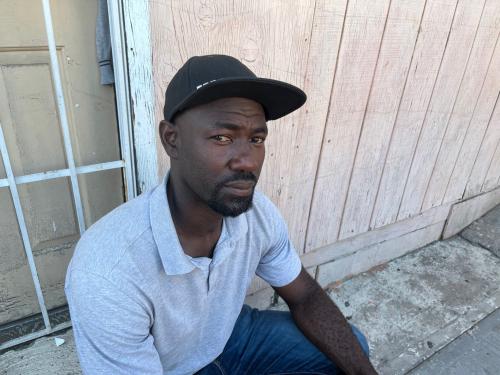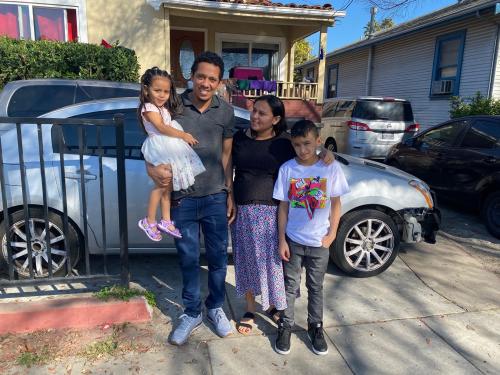Effects of Policies of Deterrence on Contemporary Migration Experiences
Robert McKee Irwin
Problem
The increasing tendency of migrants to consider asylum as their best option for immigrating to the United States has led to significant backlash from US authorities. Since 2016, the US federal government, often in collaboration with that of Mexico and other nearby nations, has implemented a series of policies that make migrating more difficult for those hoping to cross the US southern border by land, including asylum seekers who may be fleeing persecution and imminent violence. These policies have included a metering system that allows only a small number of migrants to cross at a given port each day, the Migrant Protection Protocols (MPP) system that requires some migrants to wait out their entire US asylum application process in Mexico, and the Title 42 public health policy that implements express expulsions of migrants apprehended without documentation near the border and prohibits most of them from applying for asylum. As a result, some journeys have stretched on for years, often exposing migrants to extreme danger, and resulting in extended periods of family separation.
Observations
Several stories of migrants demonstrate how complicated it has become for some to reach safety in the United States, even when there may be legal justification for their admission to the country.

The first installment of a two part story shared by Haitian migrant Pierre Louis Joseph relates his experience of migrating with his wife and six month old son from Brazil, where the family had been living for several years. To reach the US, they had to pass through nine additional countries: Peru, Ecuador, Colombia, Panama, Costa Rica, Nicaragua, Honduras, Guatemala and Mexico. While getting through sometimes hostile or corrupt state authorities, organized crime, and economic hardship implied constant distress, the most terrifying part of the journey was that of crossing the Darien Gap jungle between Colombia and Panama.
Another anonymous Haitian migrant describes his experience in the Darien in detail, recalling fears of attack by wild animals, an assault by a group of thieves, the rape of a female traveling companion, running out of food, and encounters with several bodies of recently deceased migrants: “We spent eight days wet from the rains, experiencing many atrocities, but God kept us alive, we didn’t die.”
Pierre arrived at the Tijuana border along with thousands of other Haitians in late 2016. He and his wife ventured to cross, but while they were in immigrant detention they learned that “they were only admitting women and children.” As a result, his wife and baby son were allowed to remain, while he was deported alone back to Haiti.
It took him years to save enough to attempt to reunite with his family. As he puts it in the second installment of his story, titled Tragedy in 2016, 2021, 2022: “it seems like a dream, a nightmare that will never end.” Setting out from Haiti in 2021, he had to follow the same lengthy route through ten countries to reach Tijuana, where he found the border much more difficult to cross. In 2016, a metering process had slowed the entrance of the many Haitian migrants who arrived at that time; in 2022, Pierre discovered that Title 42 made it nearly impossible for many migrants to get across the border. At the time he recorded his story in September of 2022, local humanitarian organizations were prioritizing which migrants were allowed to cross. Pierre states, “every time I go to an organization, they tell me it’s not my turn.”
Another Haitian migrant name Richard was told that the organizations were prioritizing women and children, and not single male migrants, even those like himself who wanted urgently to reach the US in order to send money home to his daughter, sister and grandmother, who were depending on his support. In the final segment of Richard’s three part story, he explains that he lost patience, crossed the border illegally, and was promptly deported to Haiti under Title 42. He returns to find Haiti in political chaos, with violent gangs running rampant; his family lives in constant fear of kidnapping and violent attacks.
Central American migrants, whose journeys may not cover as much geography as those of Haitians, may also be subject to constant setbacks that extend over years. An anonymous Honduran migrant, in a digital story titled “From Inside the Caravan,” tells of setting out alone with the migrant caravans of late 2018. Although he felt the group in which he travelled had been infiltrated by criminals and opted to make part of the journey riding the freights trains known as “La Bestia,” he returned to the relative safety of the caravan and arrived in Tijuana in November of 2018. Soon after that, he crossed the border without authorization, and was detained by the border patrol. He tells of the hostile reception he received in the second part of his story, “After the Caravan.” Despite his insistence that he feared returning to Honduras, US agents accused him of being a criminal, shouted obscenities in his face, and physically forced him to place a fingerprint on a removal form that he had refused to sign.

Immediately after his deportation to Honduras, he left again, this time with his pregnant wife and young son. They were intercepted in southern Mexico and detained there, eventually getting deported back to Honduras. Once again they left, getting as far as Huixtla, Chiapas, where his wife gave birth to a baby girl. They then settled for a short time in Monterrey, Nuevo León.
From there, his wife and son tried to cross into the US. They were allowed to initiate an asylum claim, but were sent back to Mexico under the Migrant Protection Protocols program. Immediately upon crossing back to Mexico, they were kidnapped. They had to borrow a huge sum of money, and her mother back in Honduras was forced to sell her home, but she was released. From there, the husband paid a coyote, who got him safely across to the US, where he went to work to pay their debts; meanwhile the rest of the family returned to southern Mexico, where they felt safe from organized crime, until early 2021. He explains in the final installment of his story, “Now on the Other Side” that they learned that the Biden administration was allowing those who had abandoned MPP asylum cases to reopen them, and follow them through on the US side of the border. The family was then able to reunite and settle in early 2022 in California, where they hope she will obtain asylum, although he is afraid to apply due to his previous deportation.
The legality of the deportations of Pierre and of the Honduran migrant seem questionable but it can be difficult and risky to attempt to appeal. Meanwhile, both families’ migration journeys to the US have become unending sagas that have extended more than four years in the latter case, and more than six in the former.
